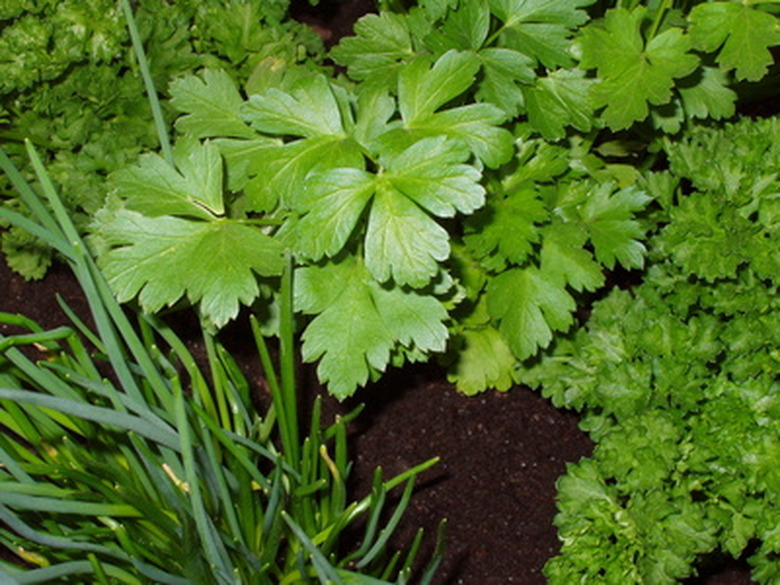How To Grow Herbs In Washington
Things Needed
- Garden fork or tiller
- Compost
- Shovel
- Water
The USDA growing regions in Washington State extend from zone 6 in eastern Washington to the mild zone 8 and 9 of the Olympic Peninsula and Seattle area. Before planting your herb garden, look up the last frost date in your area. In zone 6, the last frost date is in mid June while the mild areas around Seattle see their last frost in mid April. Herbs thrive in the rich soil and climates of Washington State. Plant an herb garden in the spring and harvest the aromatic and flavorful herbs all summer and into the fall.
Step 1
Select a sunny garden bed before you begin planting. Most culinary herbs need full sun to thrive. Herbs are best when you harvest them as they are needed. For convenience, a garden bed close to the kitchen door is ideal.
- The USDA growing regions in Washington State extend from zone 6 in eastern Washington to the mild zone 8 and 9 of the Olympic Peninsula and Seattle area.
- Before planting your herb garden, look up the last frost date in your area.
Step 2
Spread a 2-inch layer of compost over the entire garden bed. Work the organic matter into the top 5 inches of the soil using a garden fork or a tiller.
Step 3
Divide up the garden space according to how you want the herbs grouped. Cilantro and parsley have similar water needs and grow well together. Place basil, chives and dill near the cilantro and the parley. Rosemary, thyme, oregano and sage require less water. Plant these herbs together in another area of the bed.
- Spread a 2-inch layer of compost over the entire garden bed.
- Work the organic matter into the top 5 inches of the soil using a garden fork or a tiller.
Step 4
Dig holes that are slightly bigger than the nursery cells your herb seedlings are in. Plant several plants of each type of herb to increase your harvest. Space the herb seedlings 4 inches apart to give them room to fill out.
Step 5
Slide one of the herb seedlings out of the container and place it in the hole. Always plant herb seedlings at the same depth they were in the nursery pots. Fill in the soil around the root ball and press it down gently with the palm of your hand. Continue planting until all the seedlings are in the ground.
- Dig holes that are slightly bigger than the nursery cells your herb seedlings are in.
- Space the herb seedlings 4 inches apart to give them room to fill out.
Step 6
Water the area until the soil is damp to a depth of 4 inches. Water daily during dry weather to keep the soil consistently moist. Water in the morning or late evening during very hot, dry weather. Rosemary, thyme, oregano and sage need less water, every three to four days is sufficient.
Step 7
Harvest a few sprigs of herbs as you need them. Use a pair of sharp scissors and take cuttings from low on the plant. Frequent moderate harvesting will encourage new growth.
- Water the area until the soil is damp to a depth of 4 inches.
- Use a pair of sharp scissors and take cuttings from low on the plant.
Tip
Adding compost to the soil before planting gives the herbs all the nutrients they need for the growing season. Additional fertilizers are unnecessary. Plant mint separately in a pot, mint thrives in the climates of Washington and will quickly take over an herb garden.
